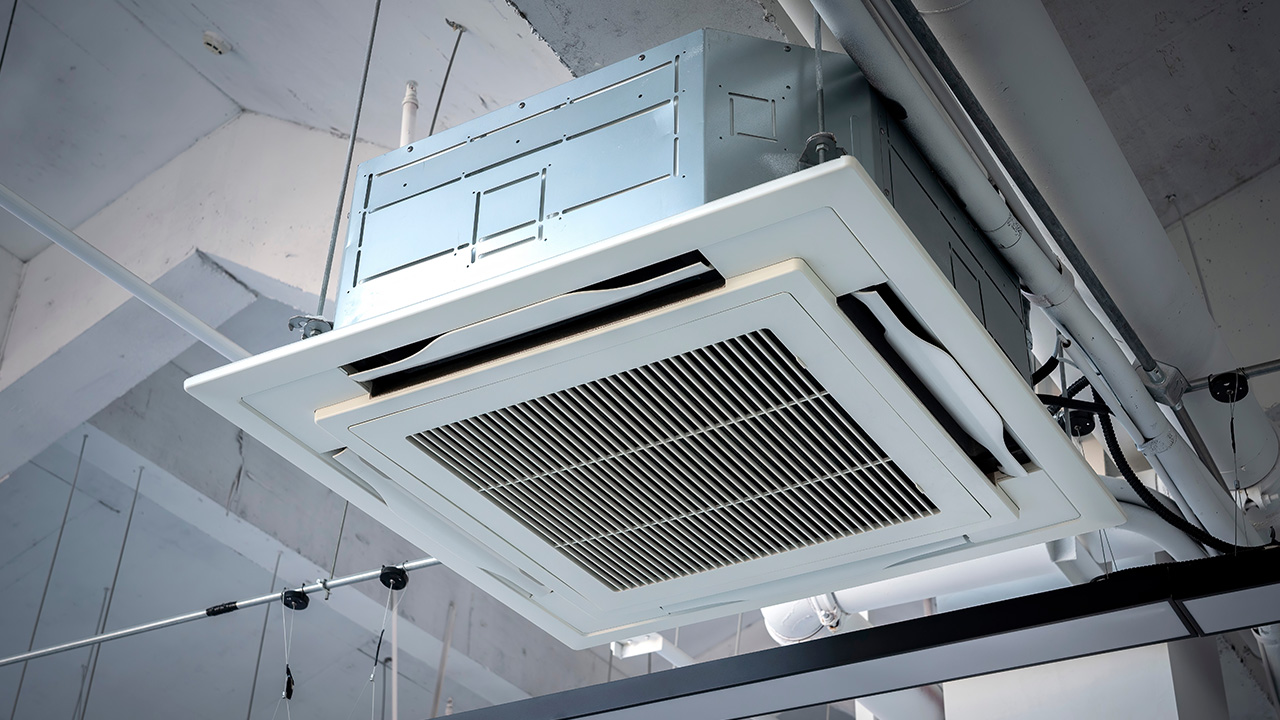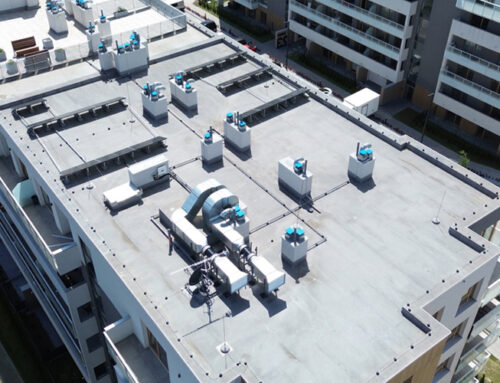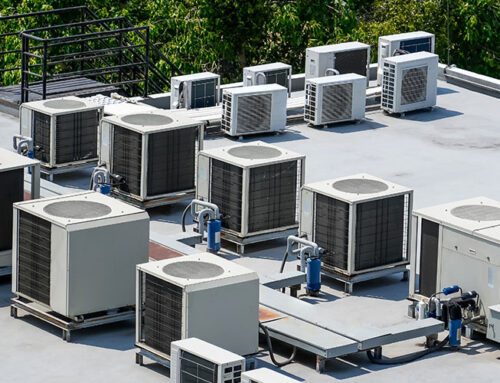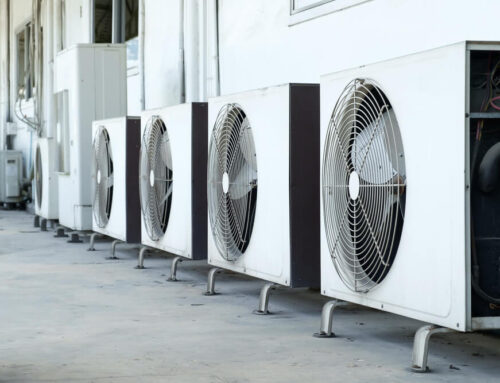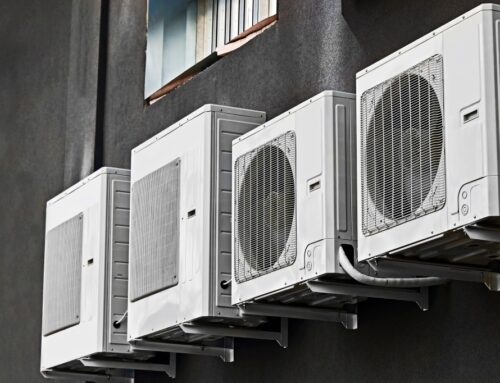When it comes to tackling the mounting challenges of today’s commercial air conditioning needs, contractors often find themselves at a crossroads between two pivotal options: Centralized AC Systems and Decentralized AC Systems. Each system offers distinct advantages and potential drawbacks that can significantly impact energy efficiency, installation complexity, and overall operational reliability. In this piece, we’ll delve into the world of Centralized Vs. Decentralized Air Conditioning Systems, examining their core differences and helping you, the hero contractor, navigate these choices with confidence.
With the right insights, and the help from us at Chills AC, you can power through the traditional hurdles and position yourself as a leader in energy-efficient solutions, armed with the knowledge to deliver optimal comfort and performance to your clients.
Understanding Centralized AC Systems
How Centralized AC Works
Centralized AC Systems are typically structured around a single, large unit that cools air at a central location and then distributes it throughout a building. This setup involves a network of ducts that carry the cooled air to various rooms and spaces. The central unit, often installed on the roof or in a mechanical room, consists of a compressor, condenser, and evaporator coil. These components work together to remove heat from the air using a refrigerant, which circulates between the indoor evaporator coil and the outdoor condenser coil.
The system’s thermostat controls the operation, ensuring that the desired temperature is maintained across the entire building. One key advantage of Centralized AC Systems is their ability to provide uniform cooling, making them ideal for large buildings where consistent climate control is necessary. However, installation can be complex and costly, with maintenance requiring specialized expertise.
Benefits of Centralized Systems
Centralized AC Systems offer several advantages, particularly for large commercial buildings. One major benefit is their ability to deliver consistent and uniform cooling across all spaces, creating a comfortable environment for occupants. This uniformity is achieved through a well-designed ductwork system that ensures air distribution is balanced. Moreover, centralized systems are known for their energy efficiency, as they often have higher efficiency ratings compared to multiple smaller units.
This can translate into lower energy bills, a key consideration for businesses aiming to reduce operational costs. Additionally, centralized systems have a longer lifespan due to their robust design, which is especially important for buildings where HVAC systems are a critical infrastructure component. Maintenance is streamlined because the system is centralized, allowing for easier access to components. While installation can be complex, the long-term benefits of reliability and efficiency often outweigh the initial challenges.
Drawbacks of Centralized Systems
While Centralized AC Systems present several advantages, they also come with certain drawbacks. A significant challenge is the high initial cost associated with installation, as these systems require extensive ductwork and a large central unit, which can be labor-intensive and expensive to set up. Additionally, the complexity of these systems often necessitates skilled technicians for both installation and maintenance, potentially leading to higher service costs over time. Furthermore, centralized systems might not be as responsive to individual room temperature preferences, as they are designed to cool entire buildings uniformly.
This lack of flexibility can be a disadvantage in spaces where different zones require varying climate controls. Centralized systems can also be less efficient in older buildings where ductwork is poorly insulated or leaky, leading to energy losses. Finally, if the central unit fails, it can impact the cooling of the entire building, making regular maintenance critical to ensure continuous operation.
Exploring Decentralized AC Systems
How Decentralized AC Works
Decentralized AC Systems operate by using multiple, independent units to cool different areas or zones within a building. Each unit functions autonomously, allowing for precise control over the climate in its specific location. This setup often involves mini-split systems or individual air conditioning units placed in various rooms or sections. These units typically consist of an indoor evaporator and an outdoor condenser, connected by refrigerant lines. The primary advantage of decentralized systems is their flexibility, as each unit can be independently controlled to suit the preferences of individual occupants or the specific needs of a space.
This zonal approach can lead to increased energy efficiency since cooling is only provided where and when it is needed. Additionally, the installation of decentralized systems is generally simpler and less invasive than centralized systems, as it doesn’t require extensive ductwork. However, the number of units required can lead to higher overall maintenance demands.
Benefits of Decentralized Systems
Decentralized AC Systems offer several compelling benefits, particularly in terms of flexibility and customization. One of the most notable advantages is the ability to tailor the climate in individual zones or rooms, allowing occupants to adjust temperatures to their specific preferences.
This feature enhances comfort and can lead to significant energy savings, as cooling is only applied where it is needed, avoiding unnecessary energy use in unoccupied areas. Installation is typically more straightforward and less disruptive, as there is no need for extensive ductwork, which also makes decentralized systems an attractive option for retrofitting older buildings.
Furthermore, decentralized systems provide redundancy, meaning if one unit fails, the rest of the system can continue to operate unaffected. This independence can be crucial in maintaining comfort without total system shutdowns. Moreover, decentralized systems often have lower upfront costs, making them more accessible to a broader range of budgets and project scopes.
Drawbacks of Decentralized Systems
Despite their many advantages, Decentralized AC Systems also have some drawbacks. A key concern is the potential for increased maintenance requirements, as multiple units mean more components that might need servicing over time. This can lead to higher cumulative maintenance and repair costs compared to a single centralized system. Additionally, while upfront costs for individual units may be lower, the total cost can escalate if many units are needed to cover a large building.
Another issue is the aesthetic impact and space requirements of having numerous external condenser units, which can clutter the exterior of a building. Moreover, decentralized systems might lack the efficiency of centralized systems when it comes to large-scale energy management, as they cannot leverage the economies of scale that a single, larger unit might provide.
Lastly, managing the operation of numerous units can be more complex, potentially requiring a more sophisticated control system to optimize energy use across the building.
Centralized Vs. Decentralized Air Conditioning Systems
Key Differences Explained
The fundamental differences between Centralized and Decentralized AC Systems lie in their structure and operational approach. Centralized systems are based on a single, large unit that distributes air through a network of ducts, providing uniform temperature control across an entire building. In contrast, decentralized systems use multiple independent units that allow for individual zone control, offering flexibility in managing different temperature requirements in various spaces. This distinction affects both installation and operational strategies.
Centralized systems demand extensive ductwork and are more suited to new constructions or large spaces requiring consistent climate control. On the other hand, decentralized systems offer easier installation, especially in existing buildings, due to the absence of ductwork. However, they require more units, which can increase maintenance demands. Energy efficiency also varies; centralized systems can benefit from scale, while decentralized systems excel in targeted cooling, reducing energy waste in unoccupied areas.
Which System Suits Your Needs?
Choosing between a Centralized and a Decentralized AC System depends on several factors specific to your project’s requirements. For large buildings or new constructions where uniform cooling is essential, a Centralized AC System might be the best fit due to its ability to maintain consistent temperatures throughout vast spaces. It also benefits projects where long-term energy efficiency and lower operational costs are priorities, despite the higher initial installation expense. Conversely, if your project involves retrofitting an existing building or requires flexibility in temperature control across different areas, a Decentralized AC System could be more suitable.
These systems allow for targeted cooling, minimizing energy waste in unoccupied zones, and offer simpler, less invasive installation processes. Additionally, if budget constraints are a concern, the lower upfront costs of decentralized systems are appealing. Ultimately, assessing factors like building size, usage patterns, budget, and maintenance capabilities will guide contractors in selecting the most appropriate system for their needs.
Cost Comparison and Considerations
When evaluating the cost implications of Centralized Vs. Decentralized Air Conditioning Systems, it’s crucial to consider both initial and long-term expenses. Centralized systems generally entail higher upfront costs due to the need for extensive ductwork and a singular, robust unit. These costs are often justified in large projects by potential savings in energy efficiency and reduced operational expenses over time. Maintenance for centralized systems may be less frequent but can involve significant costs if major components require replacement.
On the other hand, decentralized systems typically have lower initial installation costs, as they don’t require ductwork and can be installed incrementally. However, the need for multiple units can lead to higher cumulative maintenance expenses, given each unit must be serviced individually. Energy costs might also be higher if the system isn’t managed efficiently. Contractors should weigh these cost factors against the specific needs of the building, considering both budget constraints and long-term operational goals to determine the most cost-effective solution.
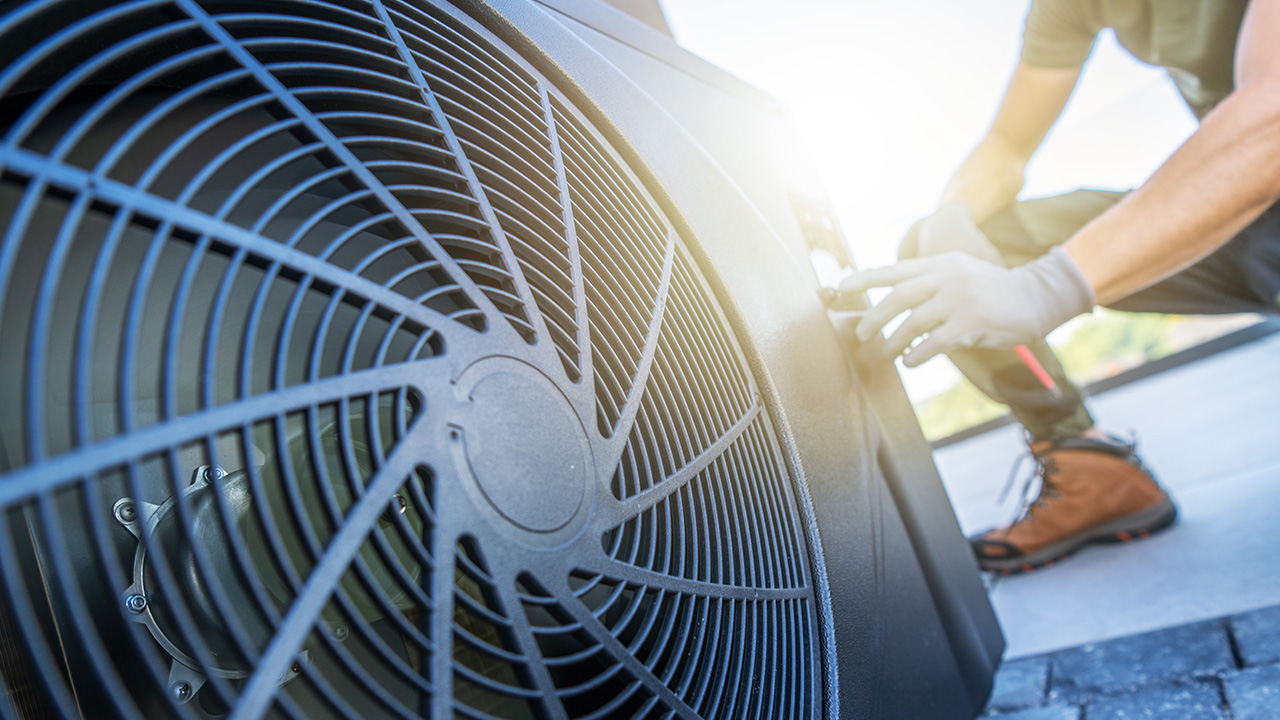
Evaluating AC Energy Efficiency
Factors Impacting Efficiency
Several factors significantly influence the energy efficiency of both Centralized and Decentralized AC Systems. One primary factor is the system’s design and installation quality. Properly sealed ductwork in centralized systems prevents air leaks, which can otherwise lead to energy loss. For decentralized systems, the placement and size of units must be carefully considered to ensure optimal performance without overconsuming energy. Additionally, the efficiency of the units themselves, measured by SEER (Seasonal Energy Efficiency Ratio) ratings, plays a crucial role.
Higher SEER ratings indicate better energy efficiency, and opting for high-efficiency units can lead to substantial long-term savings. Regular maintenance, such as cleaning filters and checking refrigerant levels, is essential for maintaining optimal efficiency across both system types. Finally, building insulation and the ability to utilize programmable thermostats can further enhance efficiency by reducing the load on the AC system. Understanding these factors helps contractors optimize energy use and improve system performance.
Tips for Maximizing Efficiency
To maximize the energy efficiency of both Centralized and Decentralized AC Systems, contractors can adopt several practical strategies. First, ensuring regular maintenance is crucial; this includes cleaning air filters, checking refrigerant levels, and inspecting ductwork for leaks. For centralized systems, sealing and insulating ducts effectively can prevent energy loss. Installing high-efficiency units with better SEER ratings can also significantly reduce energy consumption. Implementing programmable or smart thermostats allows for precise control over cooling schedules, ensuring systems only operate when needed. For decentralized systems, strategically placing units to avoid direct sunlight can reduce the cooling load.
Additionally, encouraging clients to invest in building insulation upgrades can minimize heat gain, allowing AC systems to operate more efficiently. Finally, educating building occupants on optimal thermostat settings and energy-saving practices can further enhance efficiency. By following these tips, contractors can ensure that their installations deliver maximum performance while minimizing energy costs.
Long-term Savings and Sustainability
Investing in energy-efficient AC systems offers significant long-term savings and promotes sustainability. High-efficiency systems, whether centralized or decentralized, reduce energy consumption, leading to lower utility bills over time. These savings can offset the initial higher costs of purchasing and installing systems with superior efficiency ratings. Additionally, using less energy reduces the carbon footprint, aligning with sustainability goals and potentially qualifying for green building certifications or incentives. Implementing smart controls and regular maintenance further enhances savings by optimizing performance and preventing costly repairs.
Over the lifespan of the system, these efficiencies contribute to more predictable operational expenses, which is particularly beneficial for businesses managing tight budgets. Adopting energy-efficient practices not only results in economic benefits but also positively impacts the environment by reducing greenhouse gas emissions. For contractors, promoting these sustainable solutions positions them as forward-thinking leaders, capable of delivering both financial benefits and environmental responsibility to their clients.
Making the Right Choice
Factors to Consider Before Buying
When selecting an AC system, several factors should be taken into account to ensure the right choice is made. First, evaluate the size and layout of the building. Larger buildings may benefit more from a centralized system for consistent cooling, while smaller or more segmented spaces might be better suited for decentralized units. Consider the installation and operational costs, as centralized systems typically have higher upfront expenses but may offer savings in long-term energy efficiency. Conversely, decentralized systems can be more cost-effective to install but might incur higher maintenance costs.
Assess the level of control needed—if individual room temperature settings are important, decentralized systems provide more flexibility. Review the building’s existing infrastructure; retrofitting might be simpler with decentralized systems due to the lack of ductwork. Finally, think about future expansion plans, as scalability is crucial. By considering these factors, contractors can guide clients toward a system that aligns with their specific needs and budget.
Role of Contractors in Decision-Making
Contractors play a pivotal role in guiding clients through the decision-making process for selecting the right AC system. Their expertise is critical in assessing building requirements, understanding client needs, and providing informed recommendations. By conducting thorough site evaluations, contractors can identify the most suitable system type—centralized or decentralized—based on factors like building size, layout, and existing infrastructure. They can also help clients weigh the pros and cons of each option, taking into account long-term energy costs and maintenance implications.
Contractors are instrumental in explaining technical details in a simple, understandable way, helping clients make confident decisions. Furthermore, they can access the latest technologies and best practices, ensuring that clients benefit from up-to-date solutions. By acting as trusted advisors, contractors not only facilitate optimal system selection but also reinforce their reputation as reliable industry experts, ultimately leading to successful installations and satisfied clients who trust their judgment.
Leap’s Solutions for Contractors
Leap provides cutting-edge solutions designed to empower contractors in the HVAC industry. As contractors face the challenges of selecting and installing the right AC systems for diverse projects, Leap simplifies the process with its comprehensive suite of tools. By digitizing traditional processes, Leap enhances efficiency, allowing contractors to streamline project management, from initial client consultations to final installation. Leap’s platform offers easy-to-use features for generating accurate estimates, managing customer relationships, and tracking project progress in real-time.
This ensures that contractors can provide transparent and efficient service, building trust with clients. Additionally, Leap’s solutions are designed to be adaptable, catering to the specific needs and preferences of each contractor, whether they specialize in centralized or decentralized systems.
By leveraging Leap’s technology, contractors can focus on what they do best: delivering high-quality installations and exceptional service, positioning themselves as leaders in energy-efficient solutions and customer satisfaction.
For all other information you might need feel free to contact our expert team and ask for guidance and support. Call us today!

